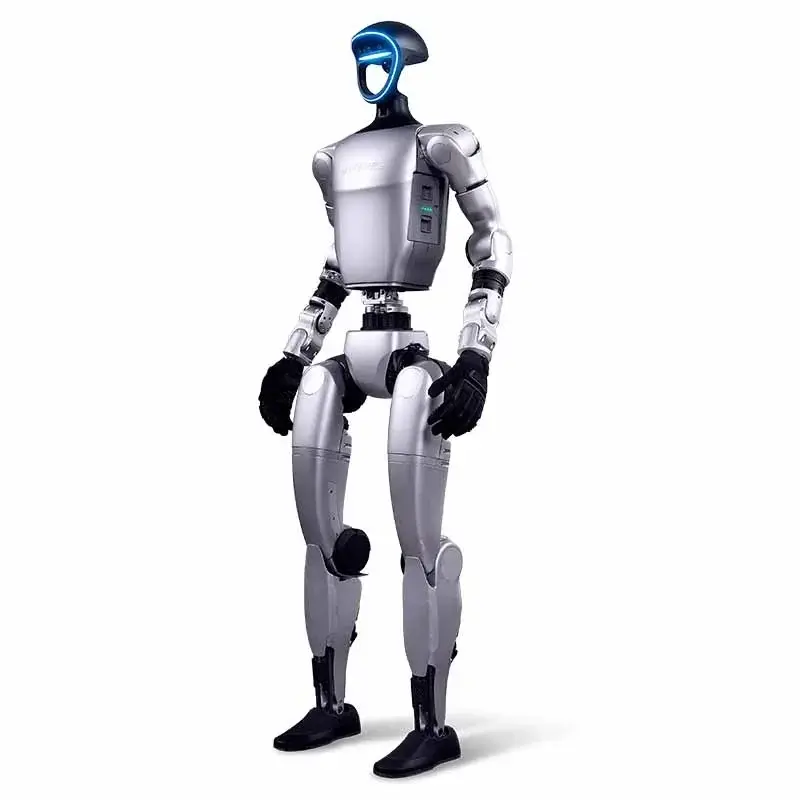Unlocking Precision: A Beginner’s Guide to Desktop CNC Mills
So, are you fascinated by the idea of milling metal, plastic or wood with robotic precision on your workbench? Welcome to the world of desktop CNC (computer numerical control) milling machines! These compact machines are revolutionizing the way hobbyists, engineers, educators and small businesses make things. Forget yesterday’s huge factory floors; today’s powerful and easy-to-use bench grinders bring industrial-grade functionality right to your desktop.
This guide takes an in-depth look at desktop CNC mills, demystifying the technology and helping you take your first steps into subtractive manufacturing.
What exactly is a desktop CNC mill?
Think of it as a highly sophisticated automated engraving machine guided by computer instructions. Unlike handheld routers or manual milling machines, CNC mills precisely move a rotating cutting tool along multiple axes (usually 3: X, Y, and Z) to cut, drill, and shape materials based on a digital design file (usually created by CAD/CAM). this "desktop" The moniker refers to its relatively compact size, designed to fit in a workshop, garage, laboratory or small commercial space.
Why Choose a Desktop CNC Milling Machine?
- Accessibility and Affordability: Compared to industrial giants that cost hundreds of thousands, benchtop grinders offer a large portion of their capabilities at a lower cost, ranging from a few thousand to tens of thousands.
- Space efficiency: Its compact footprint makes it ideal where space is limited. No dedicated factory floor is required.
- Rapid prototyping: The speed at which designs can be iterated upon is incredible. Transform CAD models into physical parts in hours, accelerating product development cycles for inventors and engineers.
- Educational Tools: Ideal for STEM courses, instructional design, engineering principles, machining basics, and CNC programming.
- Customization and small batch production: Create unique parts, complex assemblies, molds, signage, jewelry and custom fixtures for repair projects or limited product runs.
- Material Versatility: Depending on the machine’s rigidity and spindle power, a quality bench mill can machine wood, plastics, composites, non-ferrous metals (aluminum, brass), and even some tougher steels (requiring slower cuts and appropriate tooling).
- Repeatability and Accuracy: Get consistent, high-precision parts every time the program is run – critical for functional components.
Key features and factors to consider when choosing:
- Frame and stiffness: This is the most important thing. Look for sturdy construction (cast iron or thick aluminum is ideal). Rigidity prevents vibration ("chatter") ensures precision, good surface finish and longer tool life during the cutting process. Avoid flimsy, lightweight frames, especially those made of metal.
- Scope of work: The maximum size (X, Y, Z dimensions) of the part you can machine. Carefully weigh your typical project needs.
- Spindle motor power and speed: Measured in horsepower (HP) or watts (W) and revolutions per minute (RPM). Harder materials or aggressive cutting require higher power (>= 1 HP). High RPM (>10,000) facilitates finer surface preparation and smaller tools. Make sure that the spindle uses a standard tool holder (such as an ER chuck).
- Control system and software: The computer that drives the machine. Is it a dedicated controller, or does it require a connected PC running software such as Mach3, Mach4 or LinuxCNC? Understand the software ecosystem (CAD for design, CAM for toolpath generation) and its learning curve. Looking for a user-friendly interface.
- Linear motion system: Guide rails and bearings determine smoothness and accuracy. Ball screws are superior to lead screws in terms of accuracy and minimum clearance. The rigidity of linear guides is better than that of round rods.
- Stepper motors and servo motors: Stepper machines are common among entry-level/mid-level machines – cost-effective and reliable. Servos offer greater accuracy, speed and torque under load, but are much more expensive.
- T-slot workbench: Multifunctional fixing point for clamping workpieces. T-slot size and spacing are important.
- Dust and Chip Management: Cutting produces a lot of debris. Consider an enclosure or built-in vacuum port. Essential for safety and keeping your work space clean.
Getting Started: Your First Steps
- Learn G code (basics): While CAM software simplifies programming, knowing the basics of G-code commands gives you more control and troubleshooting capabilities. Many free online resources exist.
- Master CAD/CAM software: Start with easy-to-use options like Fusion 360 (free for hobbyists/startups) or Carbide Create. Learn drawing (CAD) and use toolpaths (CAM) to convert drawings into machine instructions.
- Material and Tool Procurement: Source the right materials (for example, 6061 aluminum is great for practice). Invest in quality cutting tools (end mills, drills) suitable for your material. Carbide drill bits are standard for metals. Using metal cutting fluids can extend tool life and improve finish.
- Safety first:
- Always wear safety glasses.
- Consider hearing protection (especially when using noisy spindles/materials).
- Never wear loose clothing or jewelry.
- Beware of sharp chips – use chip guards.
- Understand machine emergency stop and homing procedures. Please refer to your manual.
- Start simple: Start learning the ropes with a soft material like wood or processed wax. Design simple shapes (square, circle) focusing on feeds, speeds and spindle control.
- Fixtures are critical: Make sure the workpiece is clamped securely. Loose parts are dangerous and can ruin a job. Use a vise, clamps or double-sided tape as appropriate.
- Embrace iteration: Your first part may not be perfect. Learn about tool marks, dimensional errors or breakage by adjusting speeds, feeds, tool paths or fixtures.
Beyond the Desktop: Scale to Complex Production
While desktop CNC mills unlock incredible potential, they also have inherent limitations. Rigid constraints limit the size and cutting strength of parts, especially in hard metals. Achieving highly complex geometries, ultra-tight tolerances, complex surface finishes or efficiently producing high volumes often requires the power and sophistication of industrial 5-axis CNC machining centers.
Conclusion: From desktop dreams to industrial reality
Your CNC machining journey begins with understanding the incredible capabilities a bench mill has to offer. They empower creativity, accelerate innovation, and put manufacturing power directly into your hands. Choosing the right machine requires careful consideration of rigidity, power, accuracy and your specific goals. Start simple, prioritize security, accept the learning curve, and watch your digital designs transform into tangible realities.
When your project requires greater complexity, larger production volumes, or a production-grade finish on challenging materials, it’s time to partner with the experts at Manufacturing Summit. that’s there huge light Sparkling.
as a professional Five-axis CNC machining manufacturerGretel has advanced equipment, deep technical expertise and strong production capabilities to handle your most demanding precision manufacturing challenges. We specialize in:
- Complex metal parts: Utilize high-precision 5-axis machining to handle complex geometries, angles and contours not possible with benchtop mills.
- Extensive materials expertise: Work with a variety of metals and engineering plastics with confidence.
- One-stop solution: Streamline your production with our comprehensive post-processing and finishing services (anodizing, heat treating, powder coating and more).
- Fast customization and speed: Need custom parts quickly? We prioritize efficient turnaround without compromising on quality.
- Competitive Accuracy: Get industrial-grade precision machining solutions at the best value.
Whether you’re prototyping breakthrough ideas or ramping up production, GreatLight delivers the reliability and expertise you need. Ready to level up your manufacturing business? Customize your precision parts today at the best prices with GreatLight 5-axis CNC machining – your trusted industrial-scale fulfillment partner.
Frequently Asked Questions (FAQ)
1. How much does a decent desktop CNC milling machine cost?
Prices vary greatly based on features. Entry-level machines capable of balsa/plastic engraving start at about $1,000 to $3,000. Prices for rigid metal machines typically range from $5,000 to over $20,000. Industrial-grade bench grinders can cost over $30,000. Think of it as an investment; prioritize rigidity and spindle power for serious work.
2. What materials can I actually mill on a desktop CNC?
Entry level: wood, plastic, processed wax, soft non-ferrous metals (e.g. wax molding clay). Rigid machines: Aluminum (favorable), brass, some harder plastics, possibly mild steel or stainless steel (slower speeds/feeds, requires an extremely rigid machine). Be sure to check the machine’s specifications to see what it’s rated for.
3. Is it difficult to learn CNC machining?
There is a learning curve, but with dedication, it is achievable. Key areas include understanding basic G-code, mastering CAD/CAM software, selecting tools, and determining feeds/speeds. Start simple and take advantage of online tutorials and communities. Think of it like learning a powerful new craft.
4. Do I need a case?
Highly recommended. The housing contains chips, significantly reduces noise, increases safety by containing debris, and aids in chip/coolant management. Many machines offer optional enclosures; DIY solutions also work.
5. What are the main differences between 3-axis and 4-axis/5-axis CNC milling machines?
- 3 axis (XYZ): Cut from above. Features on the top and sides of the part can be machined, but complex geometries require repositioning.
- 4 axis: Adds rotation about the X-axis (A-axis). Allows machining of features on the sides of cylindrical parts (e.g. cam profiles, complex engravings) in a single setup.
- 5 axis: Add rotation about the Y-axis (B-axis) or Z-axis (C-axis) to 4-axis motion. The ability to machine highly complex shapes from virtually any angle in a single setup, significantly reducing lead times and improving accuracy of complex parts. (This is where GreatLight’s industrial 5-axis expertise comes in).
6. When should I use a service like GreatLight instead of my bench grinder?
Consider GreatLight when you need:
- Industrial scale production.
- Parts requiring extremely tight tolerances (< ±0.001") or complex finishes.
- Complex geometries are best suited for true 5-axis machining.
- Challenging materials requiring maximum stiffness and power.
- Advanced post-processing/finishing processing.
- Larger part sizes are beyond the machine’s working range.
Your bench grinder is perfect for prototyping, learning, and low-volume custom work. GreatLight provides advanced features and capabilities to move your proven designs into comprehensive, professional production.









































